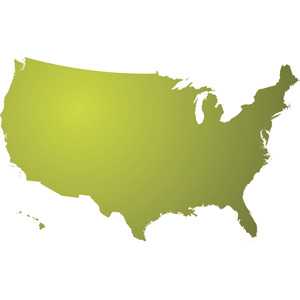People living with HIV/AIDS

As a person living with HIV/AIDS, you have many opportunities for a healthy and full life. You may also have some health challenges. One of those challenges is avoiding infections.
Many fungal infections are called opportunistic infections, which means that they usually affect people with weak immune systems. Because HIV weakens the immune system, you have a greater chance of getting some types of fungal infections, like cryptococcosis, coccidioidomycosis, histoplasmosis, and pneumocystis pneumonia (PCP).
What you need to know about fungal infections
Your CD4 count is important. You’re at greatest risk for fungal infection when your CD4 count is less than 200. Keeping your CD4 count above 200 may help you avoid serious illness.
Anti-retroviral therapy (ART) is important. Starting ART helps slow the progress of HIV and can reduce your chances of getting a fungal infection.
Fungal infections can range from mild to life-threatening. Some fungal infections are mild skin rashes, but others can be deadly, like fungal meningitis. Because of this, it’s important to seek treatment as soon as possible to try to avoid serious infection.
Fungal infections can look like bacterial or viral infections. If you’re taking medicine to fight an infection and you aren’t getting better, ask your doctor about testing you for a fungal infection.
Where you live (geography) matters. Some disease-causing fungi are more common in certain parts of the world. If you have HIV/AIDS and live in or visit these areas, you’re more likely to get these infections than the general population.1 For more information on travel related illnesses, please see the CDC Traveler’s Health site.
Your activities matter. Disease-causing fungi can be found in air, dust, and soil, especially soil that contains bird or bat droppings. Doing activities that disturb the soil, like gardening, cleaning chicken coops, construction, demolition, and visiting caves can cause you to inhale more fungi and increases your chance of infection.2
Some fungal infections can interfere with taking your medications. Thrush, an infection in the mouth and throat, is sometimes seen among people living with HIV/AIDS. This infection is not usually life-threatening, but can be painful, make it difficult to eat, or interfere with taking your medications.3 Your nutrition is an important part of staying healthy, so it’s important to seek care for this infection.
Preventing fungal infections in people living with HIV/AIDS
Fungi are difficult to avoid because they are a natural part of the environment. Fungi live outdoors in soil, on plants, trees, and other vegetation. They are also on many indoor surfaces and on your skin. However, there may be some ways for you to lower your chances of getting a serious fungal infection.
Learn about fungal infections. There are different types of fungal infections. Learning about them can help you and your healthcare provider recognize the symptoms early, which may prevent serious illness.
Find out about your risk. The danger of getting a fungal infection can change depending on your location and your CD4 count. Learning what things can put you at risk may prevent serious illness.
Get additional medical care if necessary. Fungal infections often resemble other illnesses. Visiting your healthcare provider may help with faster diagnosis and may prevent serious illness.
Antifungal medication. Your healthcare provider may prescribe medication to prevent fungal infections. For example, they may recommend medication (TMP-SMX, also called Bactrim, Septra, or Cotrim) to prevent a type of fungal pneumonia called Pneumocystis jirovecii pneumonia (PCP).3
Protect yourself from the environment. There may be some ways to lower your chances of getting a serious fungal infection by trying to avoid disease-causing fungi in the environment.2 It’s important to note that although these actions are recommended, they have not been proven to prevent fungal infections.
- Try to avoid areas with a lot of dust like construction or excavation sites.
- Stay inside during dust storms.
- Stay away from areas with bird and bat droppings. This includes places like chicken coops and caves.
- Wear gloves when handling materials such as soil, moss, or manure.
- Wear shoes, long pants, and a long-sleeved shirt when doing outdoor activities such as gardening, yard work, or visiting wooded areas.
Testing for early fungal infection. In areas of the world with high rates of HIV/AIDS and where cryptococcosis is common, high-risk HIV patients can be tested for this infection before symptoms appear. If the test detects early cryptococcal infection, treatment can prevent it from becoming deadly.
HIV/AIDS and Fungal Infections
 One of the first signs that the HIV/AIDS epidemic was beginning in the United States was a cluster of five cases of a type of fungal pneumonia called PCP in California in 1981.4 Before antiretroviral therapy was discovered, fungal and other opportunistic infections were a major problem for people with HIV/AIDS. Since then, the numbers of fungal infections and deaths due to fungal infections in people living with HIV/AIDS have decreased substantially.5,6 For example, one study showed that the incidence of cryptococcosis in AIDS patients decreased by approximately 90% in the 1990s.5 The decrease in opportunistic infections is primarily because antiretroviral therapy (ART) helps keep people with HIV from reaching the stage where their immune systems are most vulnerable to fungal infections and other infections.7 However, fungal diseases are still a concern for people living with HIV/AIDS in the US. Awareness is your best protection, and learning about the different fungal diseases will help you safeguard your health.
One of the first signs that the HIV/AIDS epidemic was beginning in the United States was a cluster of five cases of a type of fungal pneumonia called PCP in California in 1981.4 Before antiretroviral therapy was discovered, fungal and other opportunistic infections were a major problem for people with HIV/AIDS. Since then, the numbers of fungal infections and deaths due to fungal infections in people living with HIV/AIDS have decreased substantially.5,6 For example, one study showed that the incidence of cryptococcosis in AIDS patients decreased by approximately 90% in the 1990s.5 The decrease in opportunistic infections is primarily because antiretroviral therapy (ART) helps keep people with HIV from reaching the stage where their immune systems are most vulnerable to fungal infections and other infections.7 However, fungal diseases are still a concern for people living with HIV/AIDS in the US. Awareness is your best protection, and learning about the different fungal diseases will help you safeguard your health.
For more information about HIV/AIDS in the US, please visit the CDC’s HIV web site.

Even with the growing availability of HIV care and treatment in less developed countries, fungal infections, particularly cryptococcosis and histoplasmosis, are still a problem for people living with HIV/AIDS in many resource-limited settings. For example, worldwide, approximately 220,000 new cases of cryptococcal meningitis [PDF – 4 pages] occur each year, resulting in 181,000 deaths, the majority of which occur in sub-Saharan Africa.8 In Latin America, histoplasmosis is one of the most common opportunistic infections among people living with HIV/AIDS, and approximately 30% of HIV/AIDS patients diagnosed with histoplasmosis die from this infection.9 Some of the reasons that explain the public health burden of fungal diseases in these areas of the world are that there is a lack of laboratory infrastructure needed to diagnose fungal infections, or because the antifungal medications needed to treat these infections are expensive or unavailable.
For more information about HIV/AIDS globally, please visit the CDC’s Global HIV web site.
References
- Lortholary O, Charlier C, Lebeaux D, Lecuit M, Consigny PH. Fungal infections in immunocompromised travelers. Clinical Infectious Diseases 2013;56:861-9.
- CDC. Guidelines for Prevention and Treatment of Opportunistic Infections in HIV-Infected Adults and Adolescents. Recommendations from CDC, the National Institutes of Health, and the HIV Medicine Association of the Infectious Diseases Society of America. MMWR 2009;58 (RR04):1-198.
- Ruhnke M. Mucosal and systemic fungal infections in patients with AIDS: prophylaxis and treatment. Drugs 2004;64:1163-80.
- CDC. Pneumocystis Pneumonia–Los Angeles. MMWR 1981;30:1-3.
- Mirza SA, Phelan M, Rimland D, et al. The changing epidemiology of cryptococcosis: an update from population-based active surveillance in 2 large metropolitan areas, 1992-2000. Clinical Infectious Diseases 2003;36:789-94.
- Kaplan JE, Hanson D, Dworkin MS, et al. Epidemiology of human immunodeficiency virus-associated opportunistic infections in the United States in the era of highly active antiretroviral therapy. Clinical Infectious Diseases 2000;30 Suppl 1:S5-14.
- Haddad NE, Powderly WG. The changing face of mycoses in patients with HIV/AIDS. The AIDS reader 2001;11:365-8, 75-8.
- Rajasingham R, Smith RM, Park BJ, Jarvis JN, Govender NP, Chiller TM, et al. Global burden of disease of HIV-associated cryptococcal meningitis: an updated analysis. Lancet Infect Dis 2017 May 5.
- Colombo AL, Tobon A, Restrepo A, Queiroz-Telles F, Nucci M. Epidemiology of endemic systemic fungal infections in Latin America. Medical Mycology 2011;49:785-98.
- Page last reviewed: January 25, 2017
- Page last updated: July 20, 2017
- Content source:


 ShareCompartir
ShareCompartir